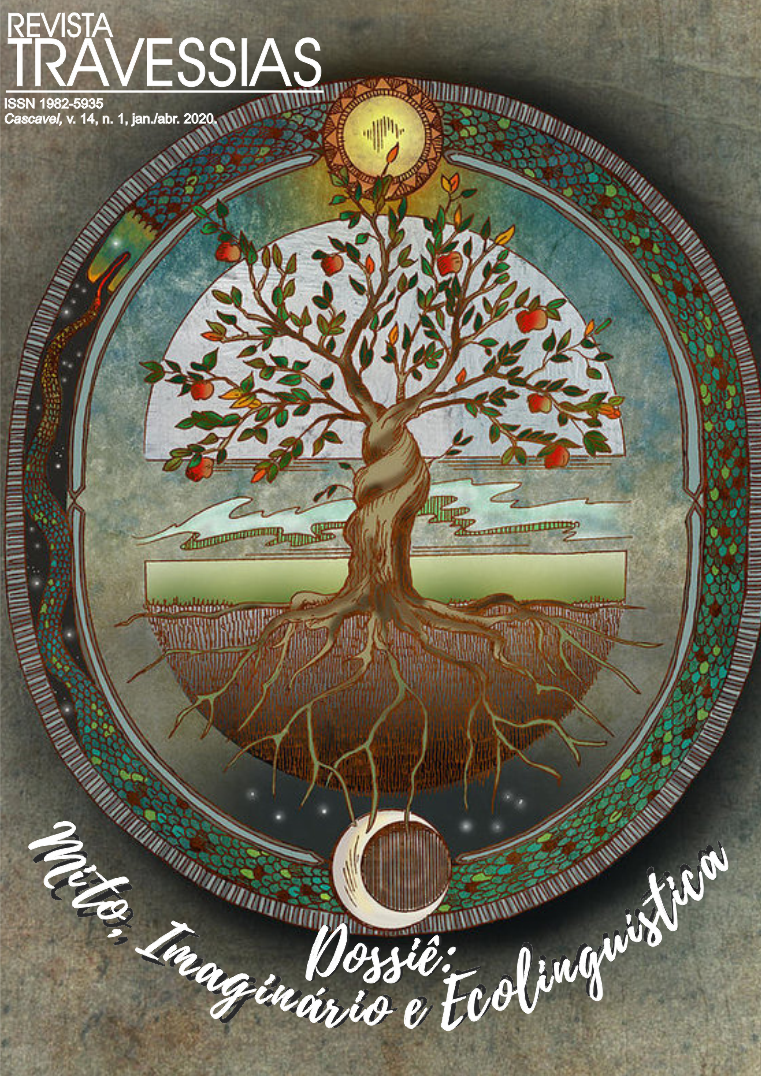A pós-vida do mito: consumo e encruzilhadas do diabo na série Lúcifer
DOI:
https://doi.org/10.48075/rt.v14i1.24172Palavras-chave:
Diabo, Lucifer, Mito, Imaginário.Resumo
Há muito tempo a Igreja Católica construiu a entidade Diabo como o responsável por todo o mal do mundo. Tal representação perdurou durante os anos, se modificou e se ressignificou, chegando hoje à mais recente construção do Diabo através da série Lucifer da Netflix. Diante deste cenário o objetivo desse artigo é compreender os efeitos e motivos do sucesso da série. Buscamos relacionar o Diabo histórico com o personagem da série; identificar quais características da sociedade contemporânea que se destacam em Lucifer; e analisar a reconstrução do imaginário do Diabo. Para atingir esses objetivos utilizamos a metodologia de estudo de caso, realizando uma análise que buscou obter novas perspectivas e reflexões entre o objeto e a teoria.Downloads
Referências
A BÍBLIA. Antigo e Novo Testamento. Tradução da Vulgata Latina. São Paulo: Novo Brasil.
BAUDELAIRE, Charles Pierre. Le Joueur Généreux. New York: Gramercy Books, 1997.
BAUMAN, Zygmunt. Vida para consumo: a transformação das pessoas em mercadoria. Rio de Janeiro: Zahar, 2008.
BERTMAN, Stephen. Hyperculture: the human cost of speed. Westport, CT: Praeger, 1998.
DRAVET, Florence; CASTRO, Gustavo de. O imaginário do mal no cinema brasileiro: as figuras abjetas da sociedade e seu modo de circulação. E-Compós, 2014.
DUARTE, Marcia Yukiko. Estudo de caso. In: DUARTE, Jorge; BARROS, Antonio. (Org.) Métodos e Técnicas de pesquisa em comunicação. São Paulo: Atlas S. A., 2005.
GARDNER, Laurence. O Diabo revelado. São Paulo: Madras, 2013.
GOODE, William J.; HATT, Paul K.. Métodos em pesquisa social. São Paulo: Nacional, 1979.
LUCIFER (Temporada 1 - 4). Direção: Tom Kapinos. Estados Unidos: Netflix, 2019. Disponível na Netflix.
MAFFESOLI, Michel. L’instant eternal. Le retour du tragique dans les sociétés postmodernes. La Table Ronde, 2000.
MORIN, Edgard. Cultura de massas no século XX: o espírito do tempo. Trad.: Maura Ribeiro Sardinha. Rio de Janeiro: Forense Universitária, 1997.
MORIN, Edgard. O método 1: a natureza da natureza. Trad.: Ilana Heineberg. Porto Alegre, RS: Sulina, 2005.
RUSELL, Jeffrey Burton. Satan: the early christian tradition. New York: Cornell University Press, 1987.
STAKE, Robert E. Case studies. In: DENZIN, Norman K.; LINCOLN, Yvonna S. (Org.) Handbook of qualitative research. United States of America: Sage, 1994.
YIN, Robert K. Estudo de caso: planejamento e métodos. Porto Alegre: Bookman. 2001.
Downloads
Publicado
Como Citar
Edição
Seção
Licença
Aviso de Direito Autoral Creative Commons
Política para Periódicos de Acesso Livre
Autores que publicam nesta revista concordam com os seguintes termos:
1. Autores mantêm os direitos autorais e concedem à revista o direito de primeira publicação, com o trabalho simultaneamente licenciado sob a Licença Creative Commons Attribution que permite o compartilhamento do trabalho com reconhecimento da autoria e publicação inicial nesta revista.
2. Autores têm autorização para assumir contratos adicionais separadamente, para distribuição não-exclusiva da versão do trabalho publicada nesta revista (ex.: publicar em repositório institucional ou como capítulo de livro), com reconhecimento de autoria e publicação inicial nesta revista.
3. Autores têm permissão e são estimulados a publicar e distribuir seu trabalho online (ex.: em repositórios institucionais ou na sua página pessoal) a qualquer ponto antes ou durante o processo editorial, já que isso pode gerar alterações produtivas, bem como aumentar o impacto e a citação do trabalho publicado (Veja O Efeito do Acesso Livre).
Licença Creative Commons
Esta obra está licenciada com uma Licença Creative Commons Atribuição-NãoComercial-CompartilhaIgual 4.0 Internacional, o que permite compartilhar, copiar, distribuir, exibir, reproduzir, a totalidade ou partes desde que não tenha objetivo comercial e sejam citados os autores e a fonte.



